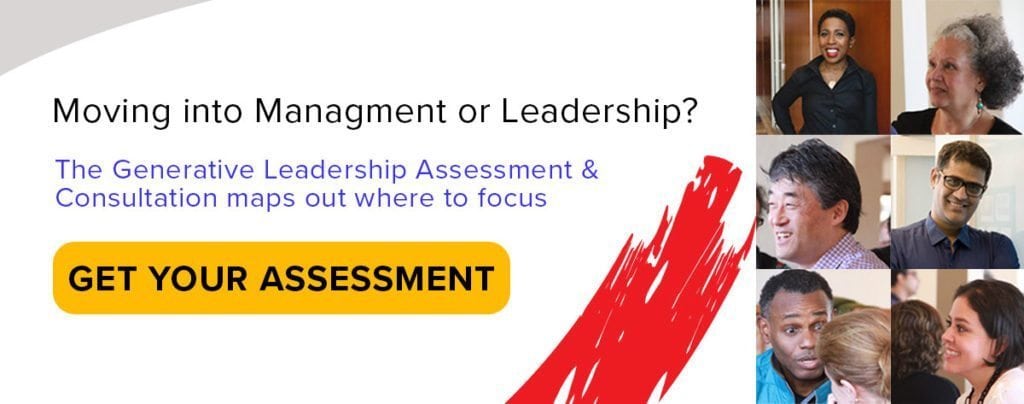I once worked for a boss who tried to say the right words, but they never rang true. He didn’t show up with his heart, energy, and presence in alignment with his words. He produced distrust in me and other team members, and a desire to avoid interacting with him. I eventually got myself onto another team.
Our bodies are always speaking louder than our mouths. What we communicate is most fundamentally shaped by our presence, and whether it is coherent or not with our message.
It’s funny how we can be next to someone and not be with them. It makes me sad to see couples in restaurants sharing a meal, but in silence, not even sharing eye contact. And we have all had the experience of having our attention wander when we’re interacting with someone else or trying to focus on something. We suddenly realize we aren’t focused on what we had intended and bring ourselves back to the moment – or we don’t.
We also notice immediately when someone else isn’t really present with us. They’re in their heads thinking about something else, perhaps looking at their email or cell phone, or looking off at something other than us. My wife calls me in those moments saying, “Where’d you go?” This usually calls me back to the moment, to be with her, although sometimes I find it hard to come back, to let go of what had dragged my attention from the moment. It’s as though the reality of my thoughts and concerns, taking me to the past, the future, and places other than where I am, sometimes have more weight than the actual moment of my life that I’m living – or at least existing in.
Develop Your Leadership Presence
In developing our leadership presence, the first step is usually to be aware if we are even present at all. We can be in our heads, thinking, and show up to others as not being with them. Being self-conscious can already produce disconnection and lack of “presence.”
Next, we must pay attention to how we show up to others. I think I usually know how I am but is that how others see me? These are body, or “somatic,” skills and are essential if we are to have a positive leadership impact on others. Yet, leadership today is usually taught and learned as ideas, models, and case studies. Yet leadership doesn’t work as ideas. It has to show up as skills – embodied abilities that make a difference.
We need to connect with people to produce authentic commitment, agreements, and coordination. But we have to be present and open before we can also be connected. Being in our heads is the biggest barrier to connection.
Where are you? The answer is simple: You are where your attention is. Not where your body is. A non-discretionary, essential leadership skill is managing our attention.
The consequences of where our attention goes are immense. Our attention is the foundation of whether communication, trust, coordination, and even love are possible, and the quality with which they are available. These are all based on the quality of our presence and our capacity for connection, which are outcomes of our attention.
Attention shapes our presence – whether we are “in attendance” or not. Presence is acknowledged to be part of leadership with the phrase “leadership presence,” but is fundamental to any interaction or relationship we have with others as well. We show up with presence – or absence. We are either “attending,” or we are “elsewhere,” not present.
[hr]
Another huge impact of our attention is our capacity for connection or disconnection. We must bring our attention and be present in order to enable a connection. We all hunger for connection. Human beings are wired for connection, we are social creatures. Communication is based on “communing,” on connecting. Love, friendship, effective communication, teamwork, belonging, loyalty, trust, and having a sense of dwelling – being at home – all require a connection. In the world of action, disconnection shows up as distrust, lack of commitment or ownership, lack of listening, lack of care, value, respect, and satisfaction, as well as miscoordination. Without connection, teamwork becomes grinding, not flowing.
In one of his stories the novelist James Joyce wrote: “Mr. Duffy lived a short distance from his body.” And this disconnection provokes the question: Is this really living? What is it to engage in full living, full aliveness? And to share this with others? Can we make our work life, our teamwork, fully alive?
One thing I am sure of, we cannot be fully connected to someone else if we are not connected to ourselves, to our own body, and to the present moment. And without connection relationship turns into the pain of loneliness, communication turns into a ping-pong of information and assessments, and coordination turns into pushing and manipulating.
Yet with all these astounding consequences to our attention, we live in a culture where we are not trained to pay attention to our attention. Our attention wanders, and in the current age, we are assaulted with opportunities to have our attention captured with novelty, media, cell phones, and computers, as well as drugs and stimulants, reality TV, and an industry of gossip. We live in an era of constant stimulation to take our attention from us.
We also live in a culture that has elevated cognitive skill as the dominant mode of knowing and way of being. Yet when we go fully to our mind and into thought, or more often when thoughts take our attention, we enter a form of disconnection – we disconnect from others, from the moment, from our bodies and emotions, even from ourselves. We can become the hostages of our thought, enter a world of abstractions, and someone else is driving the bus of our attention.
How to Connect More Fully with Others
Leadership is an exercise in creating shared futures and coordinating around the commitments to fulfill them. In exploring leadership, my colleagues and I have found that the greatest challenge of leadership is not understanding what it is, but in embodying it. And the greatest challenge of leadership, as well as relationship, if not life, is to be fully awake, aware, and attending to the present moment. Awareness creates choice, and a choice is an exercise of attention and connection. We connect to what we attend to. Attention is always an exercise of the current moment, the human moment, the leadership moment.
What is it that we must learn to attend to – and to connect to – if we are to have a choice and share a world with others? We must learn to connect more fully to what is already there. Our cultural tendency to go to thinking tends to disconnect us from what is there, what is here in this moment.
Although this learning must be done experientially, I’ll try to describe here key aspects of the process of this learning. In order to enhance our capacity for connection, we must first learn to become more aware of different aspects of the current moment – of our experience of the coherence and incoherence in our experience of body, emotions, language and background interpretations. We learn to attend to our experience differently.
In one exercise we use, for example, you say the same words over and over again with a partner (such as the words “I will”) so they have different meanings every time you speak them. You immediately find variations of body, emotions, tone, etc. that become obvious. The words don’t determine what is listened, but these other dimensions do.
As we learn we become more aware of our own coherence or incoherence in our presence, the coherence of others, and the shared space of coherence or incoherence that we create with others. We learn to resonate with what is going on around us with heightened awareness.
In this learning path, we, then, reintegrate how we attend to all these dimensions at once and learn to relax into this new awareness of the whole experience. Then, we have more choice in our communication, interaction, and coordination with others. This allows us to practice directing our attention and energy into more productive presence, connection, and resonance for shared commitment and action, for a shared future.
We also learn to connect to the current moment. Only in the current moment can we connect with another. In the current moment, we can also experience being connected or disconnected to what we, and others, care about. It is the connection to care that produces meaning, value, satisfaction, and commitment.
This is a skill, a capacity that grows with practice in paying attention to our attention, to our presence and connection, and to the quality of what we produce in our connections. This is where life happens, leadership happens, relationship happens, action and taking care happens, and where we create the future we share with others. We don’t have a choice to avoid the dimensions of presence and connection with others. We only have the choice of what we will practice and the skill we will develop in them.
Where are you? Where your attention and connection – or disconnection – have taken you, with or without your choice.



Fabulous – thank you!
Brilliant insights, Bob — “spot on” as usual! Thanks!